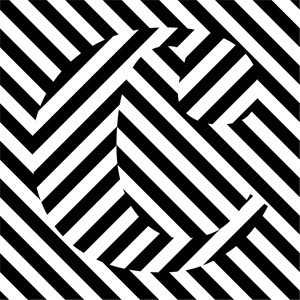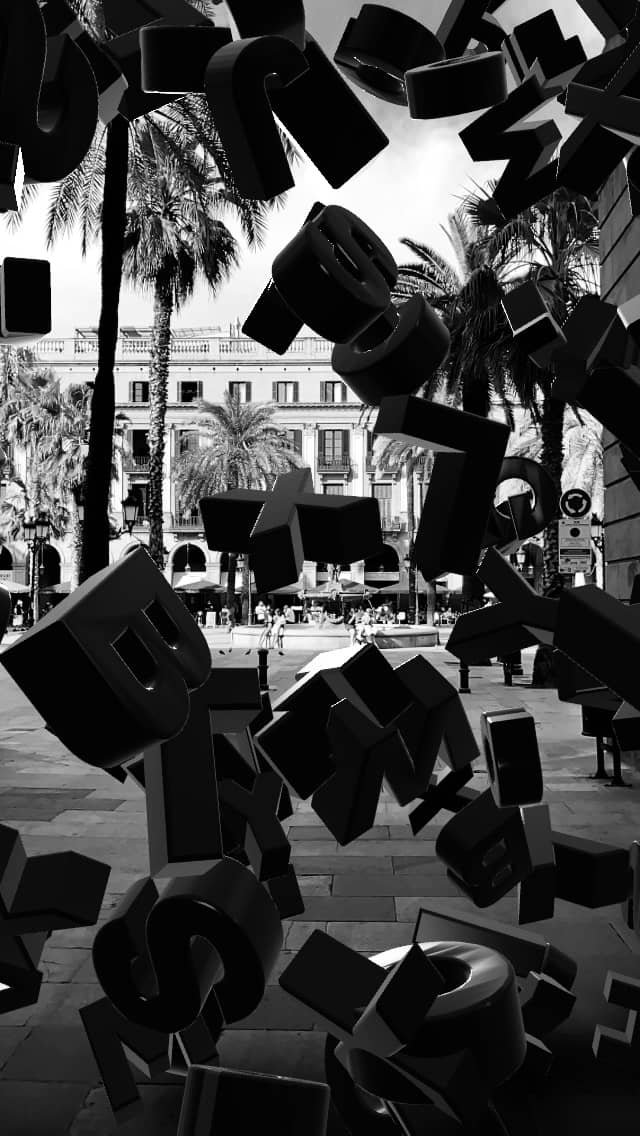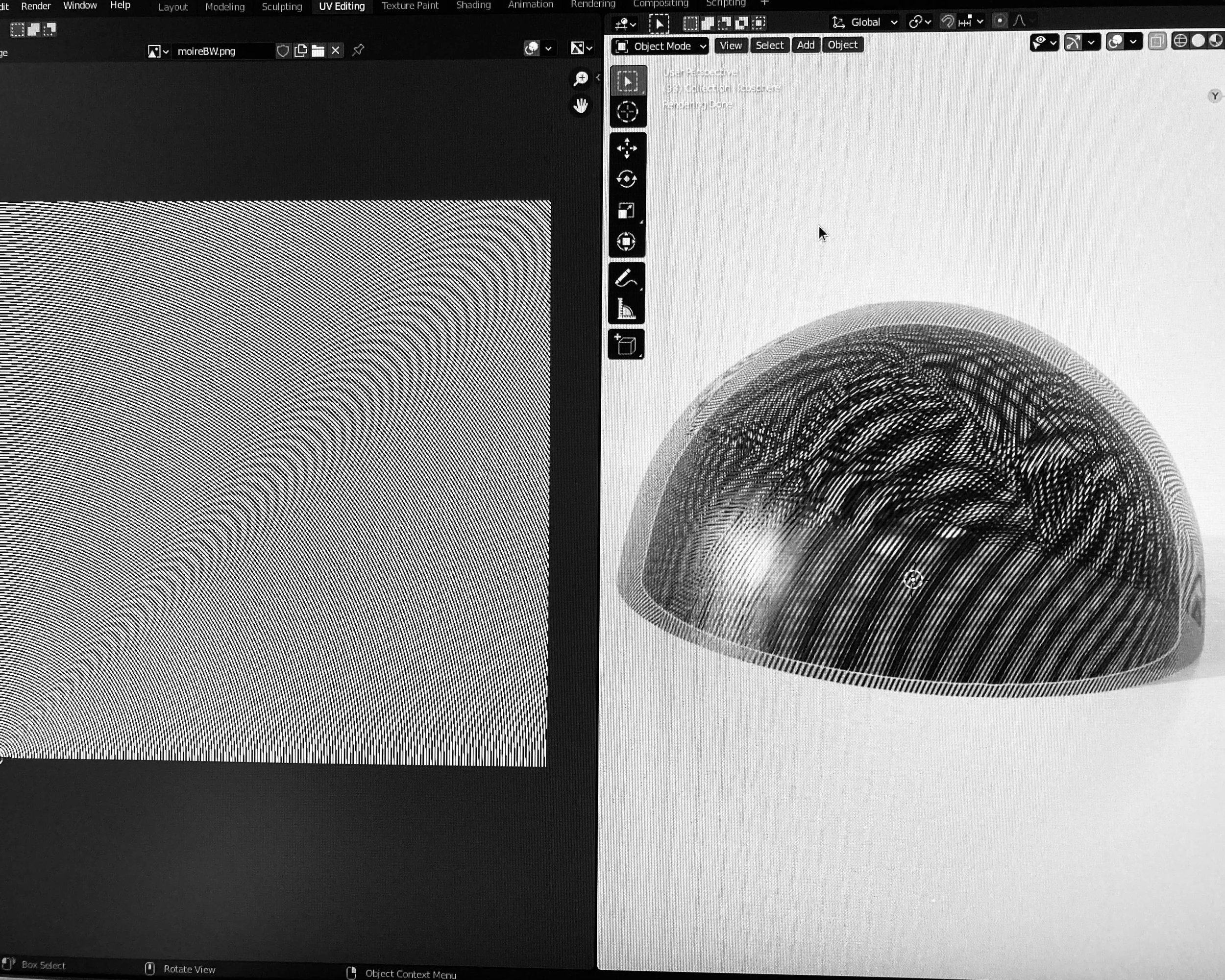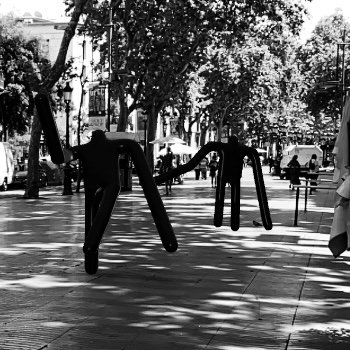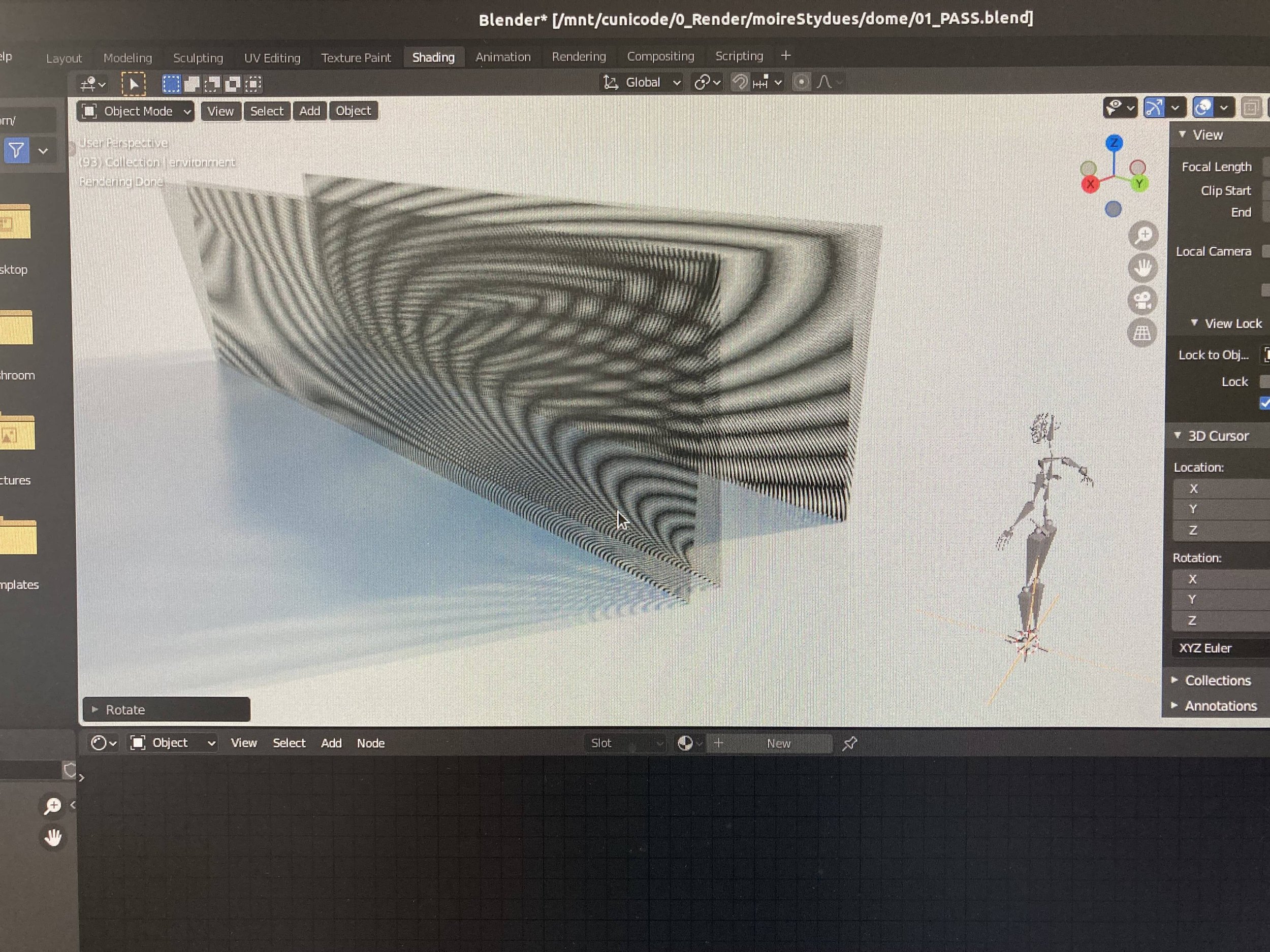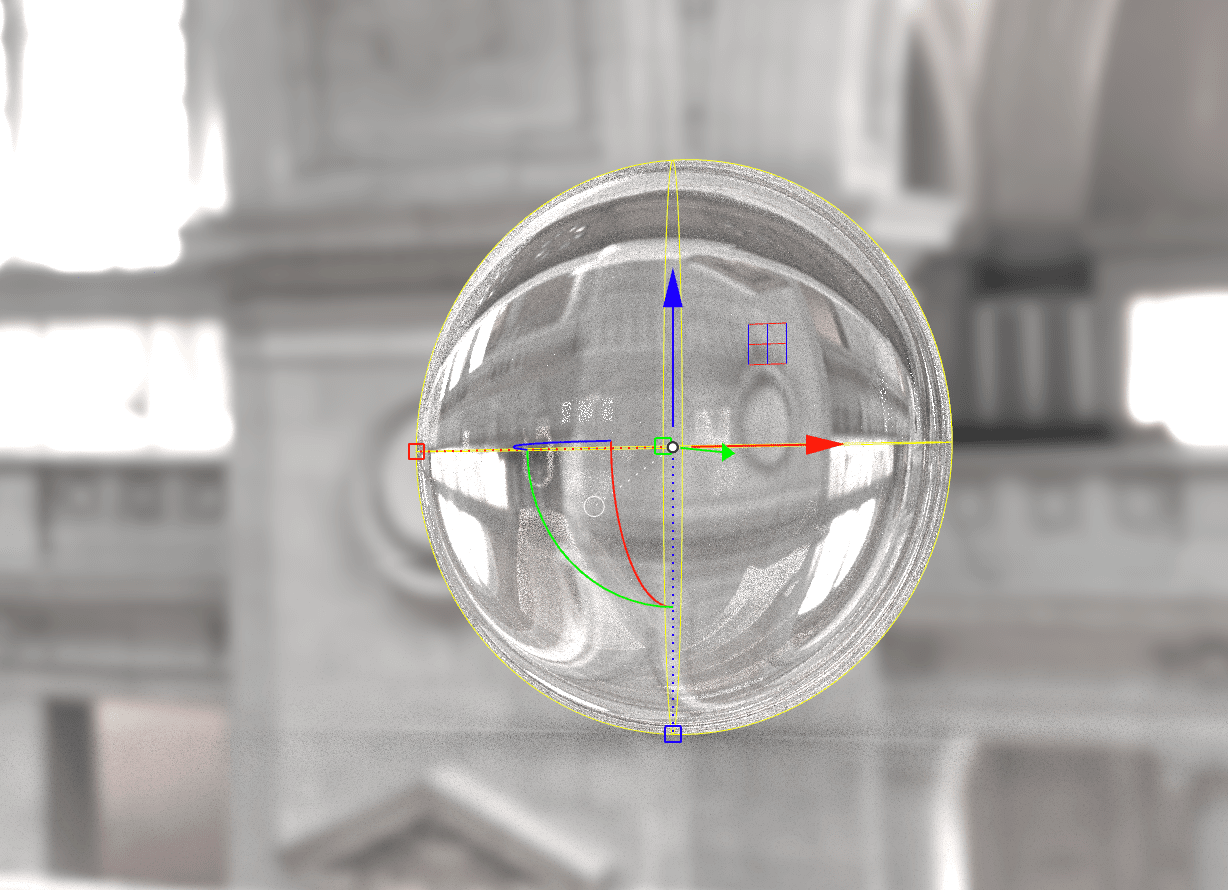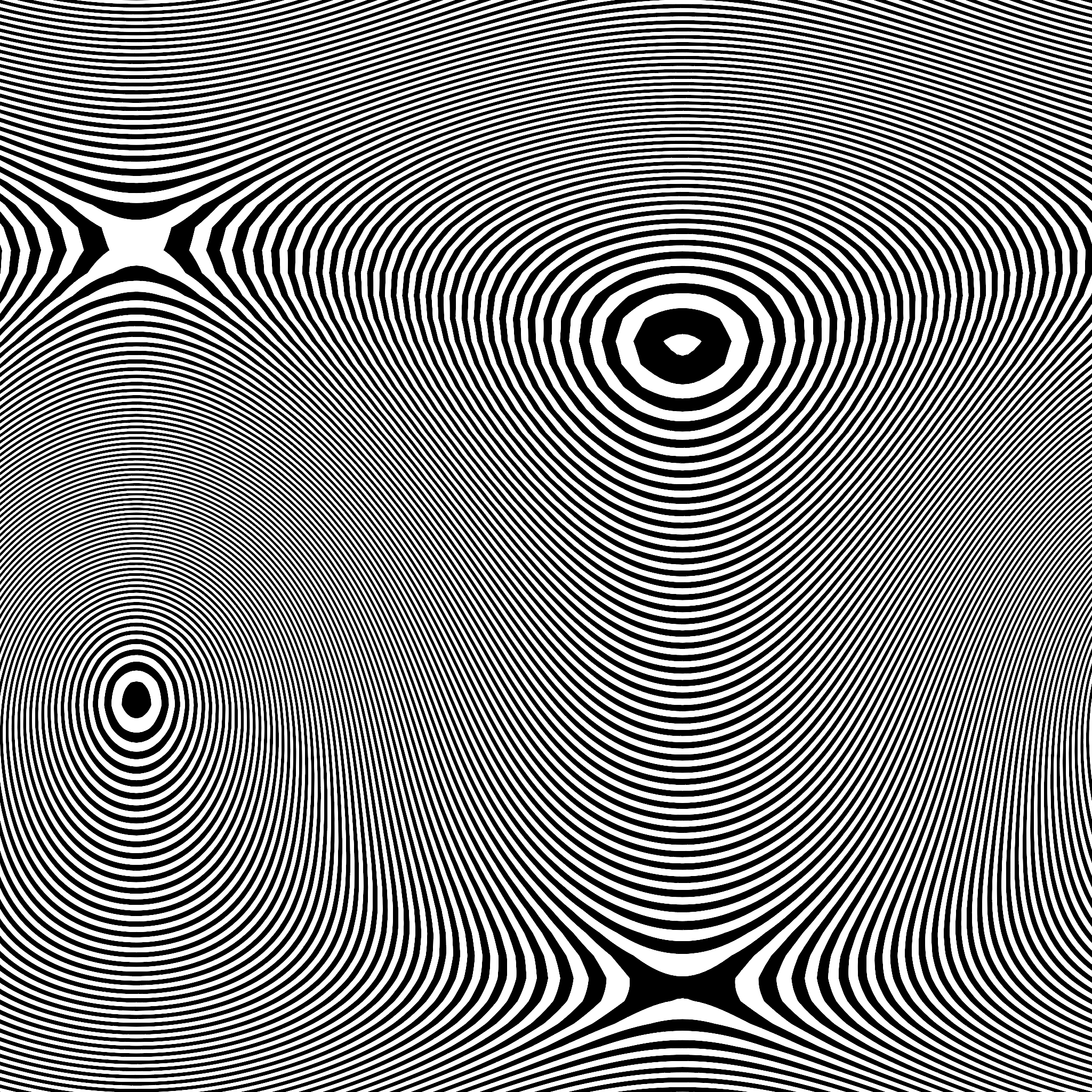VOLS
💬 work in progress - developmentInterventions in the public space, without permission, without atoms.
exploring technologies, tools and approaches to experience digital content in the physical world.
Background / Motivation
The Weight of Stuff
While working with 3D, I’ve always been seduced with the idea of bringing the content out of the screen, hence my sizeable experience and affair with 3D Printing and digital fabrication… But I don’t feel a pressing need for turning bits to atoms, I can’t find a reason to go through all the resource consumption and physical nuisances that such endeavour entails. Physicality is overrated.
I come from a product design (industrial) background, where stuff is designed to be made, and I feel I’ve developed a sensitivity towards stuff, matter, geometric volumes, materials and finishings. With such eye for the built material environment, I do appreciate and I even find joy in observing stuff, admiring the shape, materiality and mechanical solutions used to solve physical challenges. I’ve devoured countless pages of “design magazines” (I even ran a “web-ring” devoted to product design back in 2006)… I like objects, I like stuff that is expressive, products that go beyond the average intentional mediocrity of mainstream mass produced instant-junk. I do admire and appreciate the classics like Eames furniture, the contemporaries like Marc Newson, the works of the Bourollec Brothers, or the lamps of Patricia Urquiola…
I know their designs from images, videos and photos… but I have NEVER seen IRL, used, touched or owned any of their designed products…. , but I like them, very much.
What am I in relation with?… with the object? or with the idea of the object?
If stuff does not need to physically exist to be enjoyed, can can I just experience the idea of a creation?…
so… should I make stuff? or just design it?
This project is an attempt to do that:
Design without making; enabling the experience of volumes, without having to materialise stuff.
Technical approach: Augmented Reality
Augmented reality (often known as AR) is a computer technology that shows digital images on top of the current real world. For example it can show a digital table on top of a floor. It is different from virtual reality which makes a person feel they are somewhere else.
Vectors of interest
The Scale
I’m interested in the perception of scale allowed by augmented reality.
The built environment operates in a human scale, where the larger scales belong to infrastructures (bridges, damns,..) and architecture (buildings, public spaces…) while objects are at a smaller scale, (from paperclips to refrigerators). Placing something to the world of a significant scale is ecologically expensive.
With AR, it is possible to overlay volumes at any given scale.
The Public Space
As a place where interventions are forbidden or reserved to a selected few. Stuck in between the no-places and the privatisation of the public space, individuals have a very few channels of modification of public space.
The Private Experience
Within the intimacy of our devices, we exist in public (metro, street, mall…) while having a very personal, unique and secretive activity: what is happening on our screens.
This allows for experiencing something very personal, and unique to the individual (location, point of view…) while interacting in a public space with other entities
AR as a channel / tests
🧑💻 development notes<modelviewer>:new version auto-generates USDZ files for iOSauto-generated USDZ files do not trigger iOS quick-look in Chrome :(
3D model preparation in blender:USDZ export add-on des not generate proper files for iOSto use transparency textures in a .glb, the material needs to be set to alpha-blend.bake the material if contains generative textures, and build it again before exporting.only in Cycles / w CUDA (OPTIX not supported)
Animations generated by keyframing modifiers (i.e displacement) won’t export to .glba) convert selected keyframes to shapekeys and interpolateb) export model as .mdd and import it again = vertex positions will be turned into shapekeys, 1xframe! = model size * n frames[ ! ] USDZ does not read shapekey animations :(
GLTF / USDZ specifications
animated materials won’t show
potential workshop
Augmented Photography
Workshop to design and add digital creations to the physical environment as triggers for experimental photography.
Using Creative 3D modelling and Augmented Reality for street photography.
In this workshop we will create 3D volumes, export them as valid .gltf files viewable on the web, and prepare them for being launched in Augmented Reality via smartphone.
We will then go out with our freshly created AR models and run an augmented photo-session in the public space, capturing the best angles and shaping the environment at our wish.
participants
ideal for creatives who want to experiment building basic AR experiences in the public space.
Photographers / Architects / Designers / Creatives
No prior knowledge of 3D is required
motivation
This workshop is a sharing session of the current work being developed by the artist, where he is creating Augmented Reality installations in the public space as a tool to modify the environment without asking for permission and without using atoms.
learnings
build basic 3D models
make 3D models accessible via web
enable augmented reality on the phone
take photos / videos in AR
tools
blender for 3D modeling
modelviewer for publishing on the web and AR
Android’s Scene-Viewer to view AR
iOS Quick-look to view AR
requirements
BYOD - bring your own device:
laptop with Blender installed
cellphone / Android or iOS
Workshop Outputs
photographies of digital 3D models taken in the physical public space.
